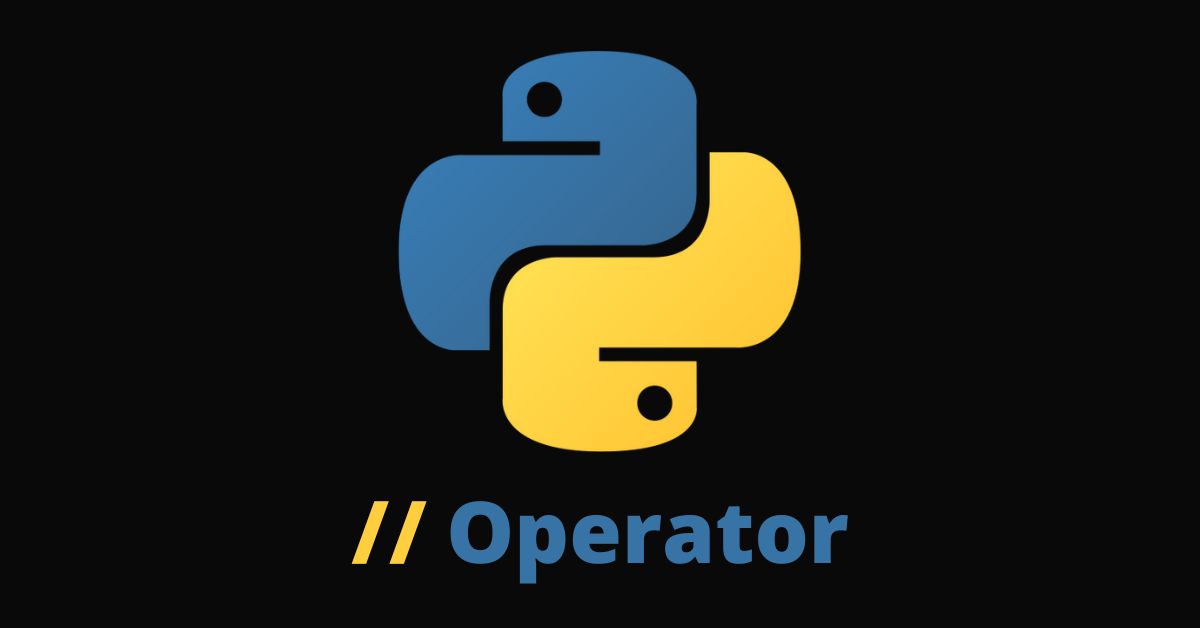In Python, you use the double slash // operator to perform floor division. This // operator divides the first number by the second number and rounds the result down to the nearest integer (or whole number).
In this article, I will show you how to use the // operator and compare it to regular division so you can see how it works.
It doesn’t end there, though – you will also learn about a Python math method that is synonymous with the double slash // operator.
What We'll Cover
- The Basic Syntax of the
//Operator - Examples of Floor Division
- The Double Slash
//Operator Works Likemath.floor() - How the Double Slash
//Operator Works Behind the Scenes - Conclusion
The Basic Syntax of the // Operator
To use the double slash // operator, you do things almost like in regular division. The only difference is that instead of a single slash /, you use double slash //:
firstNum // secondNum
Examples of Floor Division
In the example below, the floor division of 12 by 5 resulted in 2:
num1 = 12
num2 = 5
num3 = num1 // num2
print("floor division of", num1, "by", num2, "=", num3)
# Output: floor division of 12 by 5 = 2
Whereas, the regular division of 12 by 5 would be equal to 2.4. That is, 2 remainder 4:
num2 = 5
num3 = num1 / num2
print("normal division of", num1, "by", num2, "=", num3)
# Output: normal division of 12 by 5 = 2.4
This shows you that the // operator rounds down the result of the division of two numbers to the nearest whole number.
Even if the decimal point is 9, the // operator would still round the result down to the nearest whole number.
num1 = 29
num2 = 10
num3 = num1 / num2
num4 = num1 // num2
print("normal division of", num1, "by", num2, "=", num3)
print("but floor division of", num1, "by", num2, "=", num4)
"""
Output:
normal division of 29 by 10 = 2.9
but floor division of 29 by 10 = 2
"""
And if you perform floor division with a negative number, the result would still be rounded down.
To prepare your mind for the result, rounding down a negative number means going away from 0. So, -12 divided by 5 results in -3. Don’t get confused – even though at first glance it seems like the nubmer is getting "bigger", it's actually getting smaller (further from zero/a larger negative number).
num1 = -12
num2 = 5
num3 = num1 // num2
print("floor division of", num1, "by", num2, "=", num3)
# floor division of -12 by 5 = -3
The Double Slash // Operator Works Like math.floor()
In Python, math.floor() rounds down a number to the nearest integer, just like the double slash // operator does.
So, math.floor() is an alternative to the // operator because they do the same thing behind the scenes.
Here's an example:
import math
num1 = 12
num2 = 5
num3 = num1 // num2
num4 = math.floor(num1 / num2)
print("floor division of", num1, "by", num2, "=", num3)
print("math.floor of", num1, "divided by", num2, "=", num4)
"""
Output:
floor division of 12 by 5 = 2
math.floor of 12 divided by 5 = 2
"""
You can see that math.floor() does the same thing as the // operator.
How the Double Slash // Operator Works Behind the Scenes
When you use the // operator to divide two numbers, the method that gets called behind the scenes is the __floordiv__().
You can also use this __floordiv__() method directly in place of the // operator:
num1 = 12
num2 = 5
num3 = num1 // num2
num4 = num1.__floordiv__(num2)
print("floor division of", num1, "by", num2, "=", num3)
print("using the floordiv method gets us the same value of", num4)
"""
Output:
floor division of 12 by 5 = 2
using the floordiv method gets us the same value of 2
"""
Conclusion
In this article, you’ve learned how you can use the double slash // operator and how it works behind the scenes.
In addition, you learned about two alternatives of the // operator – math.floor() and the __floordiv__() method.
Don’t be confused about which to use. The three ways you can perform floor division work the same way. But I would advise you to use the double slash // operator because you get to type less with it.
Thank you for reading.

